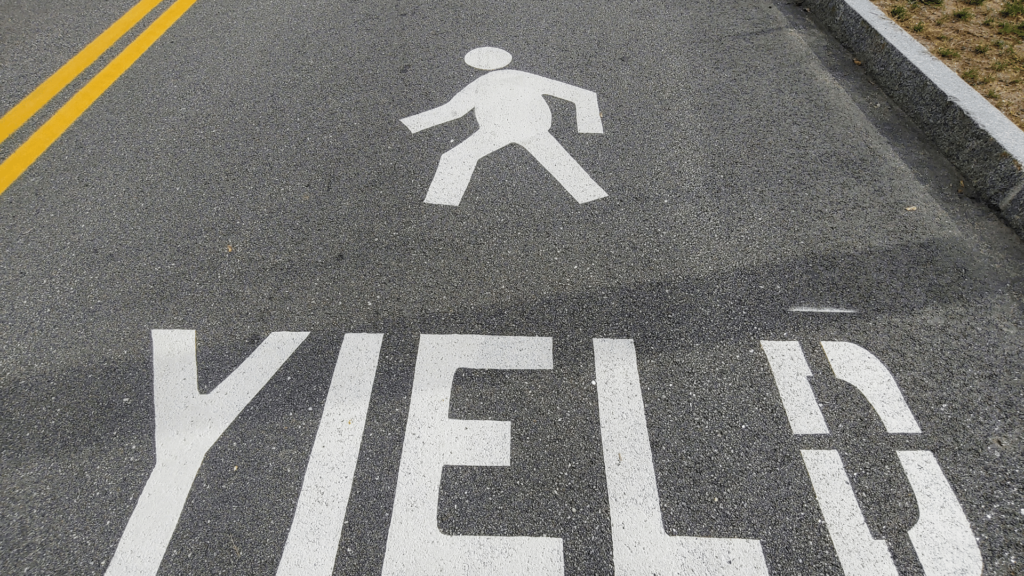Stay safe by learning how to respond to a yield sign and what yield sign means.
If you’ve driven for any length of time, especially if your driving involves heavily-traveled federal or state highways, you have surely encountered signs that say Yield. What you may not know is: what does a yield sign mean exactly, and how did it wind up being placed on your road?
What a Yield Sign Looks Like
A yield sign can be either a yellow or red-and-white upside-down triangle. Designs are approved by the U.S. Department of Transportation and published in the Manual on Uniform Traffic Control Devices, which is used by all state and local traffic commissions to assure compliance with federal traffic-control regulations. Yield signs entered the manual in 1954, to assign right of way at intersections where a stop was not normally required. Originally they were yellow but in 1971 were changed to white with a heavy red border.
Some older signs even say Yield Right of Way, and towns with growing traffic may use stanchions with a small yield sign at crosswalks reminding us to yield to pedestrian traffic.
Right-of-Way Laws
Long-standing right-of-way laws are something we usually learn when we first learn to drive. At that point we practice correlating common sense with regulations: any vehicle to the right of yours has the right-of-way, unless you’re on the bigger road.
There are several other considerations. We hear the old joke about wagons and cars and the four-way intersection. Somewhere in small-town New England where the old laws and the new laws contradict each other so badly that no one has the right-of-way. But like many things, we tend to forget details.
The Reminders

Yield signs exist to remind us that many accidents occur at intersections when drivers lose track of who-goes-when. Many experienced drivers will classify this sign as the most ignored traffic signage. As a determined driver slowly enters the interstate from the ramp ignoring cars speeding by and unable to change lanes quickly.
In crowded urban areas, drivers make quick decisions about yielding (or not yielding) to pedestrians, based on the amount of frantic, honking traffic behind them. Every year we tend to see more traffic signs including yield signs. As the Federal Highway Commission and state and local traffic commissions review accident prevention and the spending of federal funds.
How to Respond to a Yield Sign
In practical, behind-the-wheel terms, what does a yield sign mean and how do you respond? Some guidelines:
1) If you and another car, driving on similar roads (city streets, suburban streets, rural roads), come to an intersection at the same time, the right-most car has the right-of-way. You usually do not need a it to remind you.
2) If you are entering a larger road like a highway from a smaller street or ramp, expect to see a yield sign. Look for adequate space in your entry lane. Remember, the cars already on the highway are going faster than you. Do not enter the highway until you can do so without crowding other cars or making them get out of your way rapidly.
3) Pedestrians in crosswalks definitely have a right-of-way. Stop whether you hear honking behind you or not. It’s the law whether you see a it or not. And the presence of this symbol may highlight previous accidents or near misses at that particular crosswalk.
4) In general be aware of drivers who may ignore yield signs. On a highway avoid driving in the lane closest to entry and exit ramps unless you’re taking the next exit.
Some drivers may ignore the yield sign, and even those who pay attention may need more time than they anticipated to accelerate to highway speed.
What does a yield sign mean? As with all traffic signs and lights, safety first. No matter how fast you need to get somewhere, caution should always be your watchword. And that is what a yield sign means to tell you.

